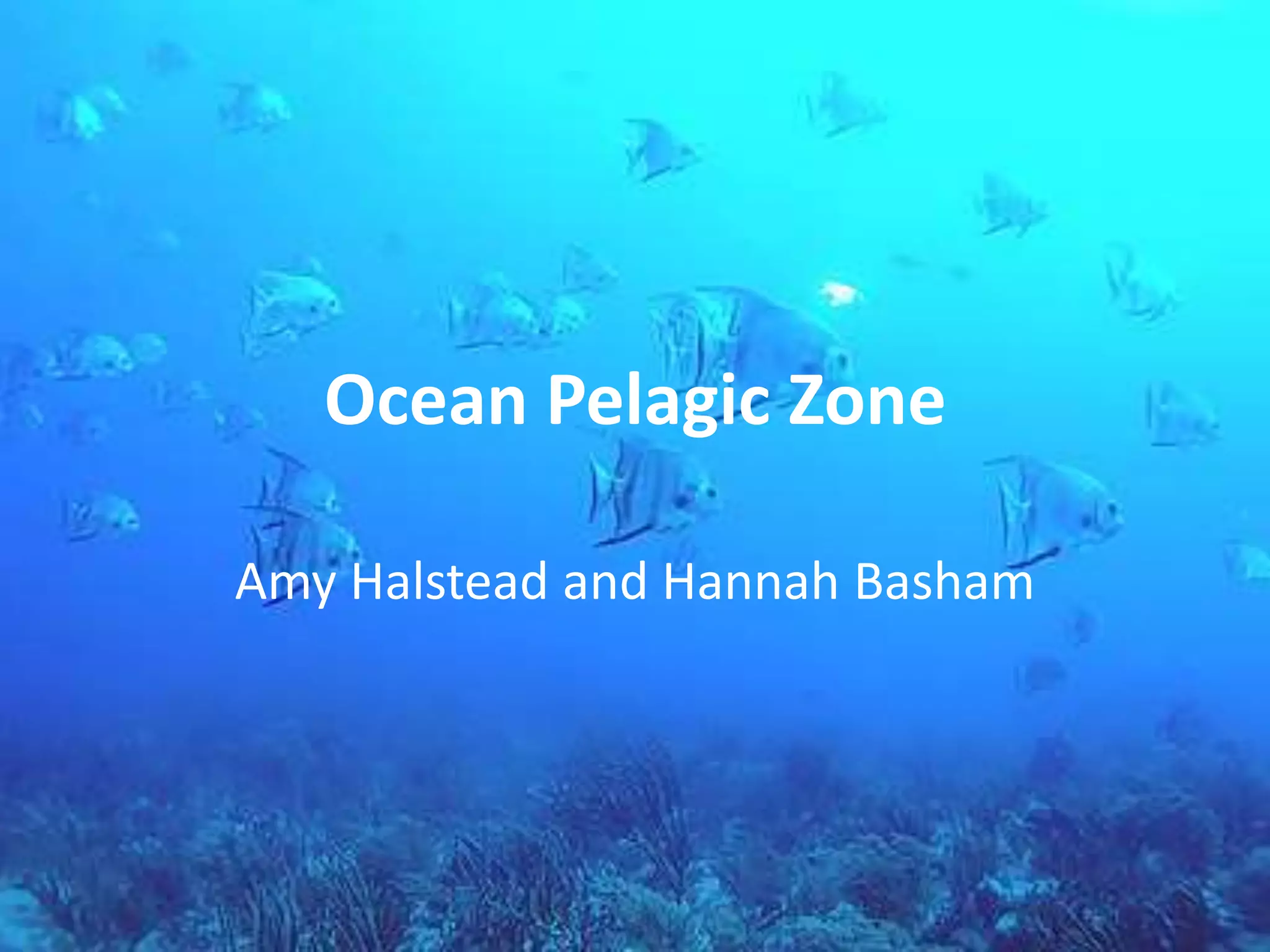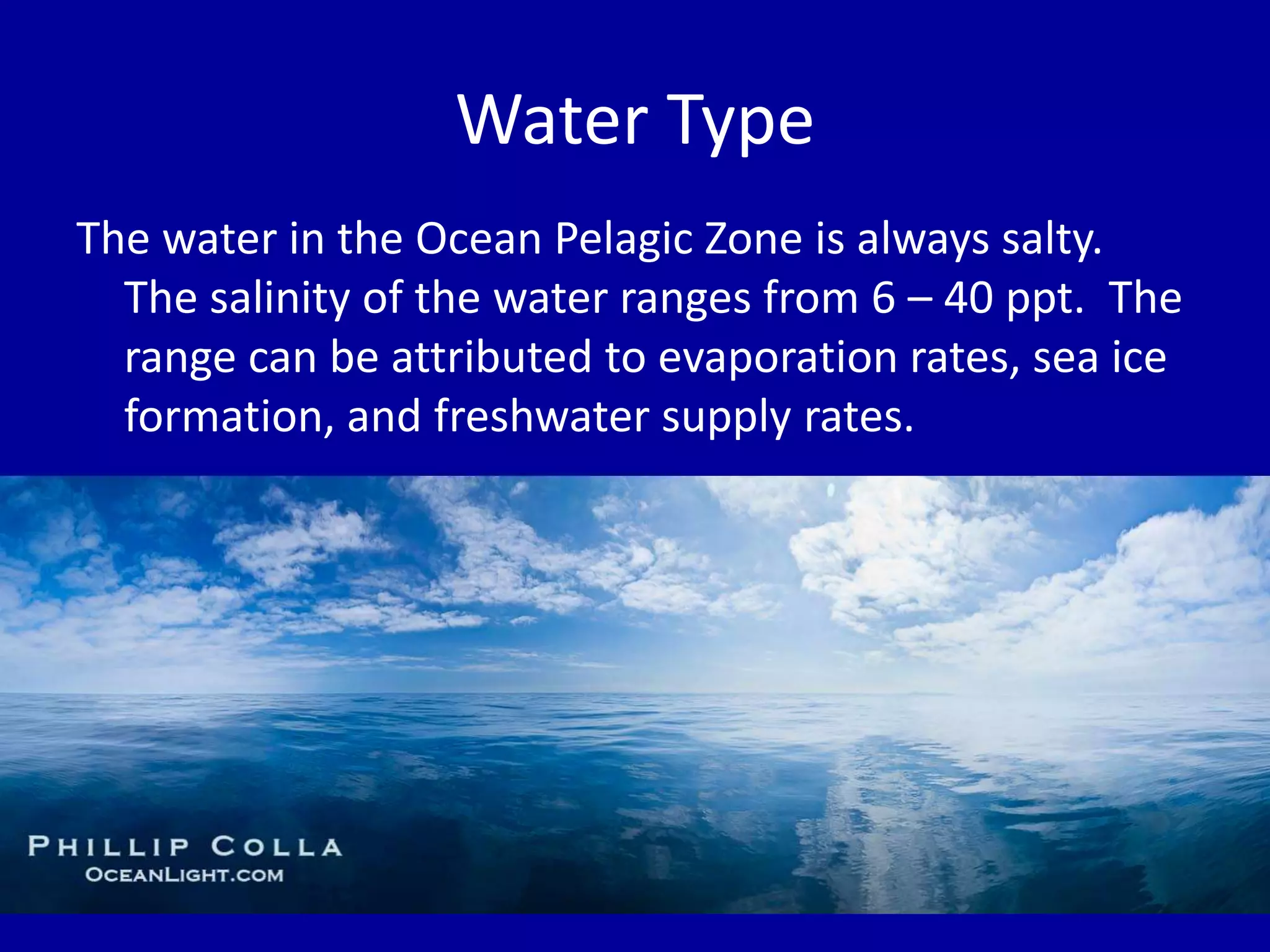The pelagic zone consists of the open ocean beyond coastal waters. It is divided into four subzones based on depth and light levels: (1) The epipelagic zone near the surface has enough light for photosynthesis. (2) The mesopelagic zone has limited light. (3) The bathypelagic zone is completely dark. (4) The abyssopelagic zone exists at the greatest depths. Organisms in each subzone have adapted to the unique conditions of their environment, such as light levels, pressure, oxygen levels and food sources. Phytoplankton and zooplankton are primary producers, while animals include birds, fish, marine mammals, and




















